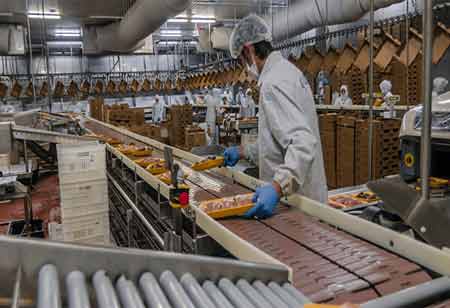Thank you for Subscribing to Agri Business Review Weekly Brief
Agriculture Is Improving In Three Ways, Thanks To Digital Transformation
The global population is expected to reach 9.7 Billion by 2050, which means the demand for food will grow, and the required resources

By
Agri Business Review | Saturday, July 09, 2022
Stay ahead of the industry with exclusive feature stories on the top companies, expert insights and the latest news delivered straight to your inbox. Subscribe today.
The agriculture area must face climate change and increasing labor and raw material costs.
Fremont, CA: The global population is expected to reach 9.7 Billion by 2050, which means the demand for food will grow, and the required resources for the agriculture sector, such as water, will further diminish. The agriculture area must face challenges such as climate change and increasing labor and raw material costs.
As the Covid-19 pandemic strengthens these challenges, digital transformation can pave the way for agriculture businesses.
This article explores three ways digital technologies transform the agriculture sector and enable companies to face current challenges.
Increasing agricultural efficiency
Covid-19 showed various weaknesses in the agricultural sector. For example, while supermarkets worldwide faced stockouts, farms destroyed overproduced food. This mainly happened due to inefficiencies and a deficit of resilience within the agricultural supply chain; digital conversion can remedy that.
Recommendations:
Autonomous vehicles & AI: The global agricultural robotics market will triple by 2050 to ~$21 Billion. Autonomous vehicles and smart farming bots are utilized for efficient harvesting. Automation in farming can cause a significant reduction in waste and labor costs and can increase operational speed. Autonomous seeding and weeding vehicles leverage AI to decrease pesticides in the fields.
IoT in Irrigation: Irrigation systems like SDI (Subsurface Drip Irrigation) that leverage IoT-enabled soil and weather sensors can discover the moisture and supply the necessary water directly to the crop's roots. These systems considerably increase efficiency in the process and decrease water consumption.
IoT for Livestock management: IoT-allowed sensors can also be utilized to monitor temperature and humidity levels at the farm to offer information for maintaining the health of the livestock. Moreover, infrared devices can scan livestock feed and send nutritional reports immediately to farmers' mobiles.
Leveraging Drones for field monitoring: Drones are an affordable replacement for aerial helicopter analysis of farms. They give efficient monitoring and analytics to the farmers concerning field damage and soil conditions. This allows optimal decision-making at a reduced cost.
Changing the organizational culture: Successfully implementing digital technology in any business requires the purchase of expensive software and the leadership to change the organizational culture. Workers can be hesitant in adapting to these new digital technologies, and the executives need to ensure that they understand the goal of digital transformation and get adequate training.
Increasing agricultural resilience
As the climate and the pandemic create a more uncertain and volatile environment in the agricultural supply chains, digital technologies can help reach lower uncertainty and higher resiliency.
Recommendations:
Data processing: Historical harvest data stored in the cloud can be analyzed to enable optimal future decision-making.
Cloud solutions: Cloud applications can provide strong processing power to agriculture companies to use farm management systems and share data across the value chain.
Big data analytics: Big data analytics can be used to analyze a vast amount of data on the changes in weather, consumer demand, and inventory levels to balance supply and demand in the agricultural supply chain.
E-commerce in agriculture: E-commerce platforms can bridge the gap between the farmers and the retail market. As a result, farmers can get up-to-date pricing information and better control over the supply chain.
Improving agricultural sustainability
The agriculture sector rests one of the largest contributors to global GHG (greenhouse gas) emissions. Digital technologies can help improve sustainability across the agricultural supply chain.
Recommendations:
Advanced telemetry systems for agricultural sustainability: These systems use GPS to provide accurate information on asset management and usage, including fuel usage, upcoming maintenance, and idle time to help make sustainable decisions.
Smart Cattle Farms: IoT-enabled sensors can accurately monitor greenhouse gasses produced on the farm and use advanced analytics to present carbon emission reports and insights.
Agricultural transparency: Blockchain technology has various implications for improving agricultural sustainability. Unaltered information regarding ethical practices and carbon emissions can be accessible across the supply chain, allowing transparency and trust.





